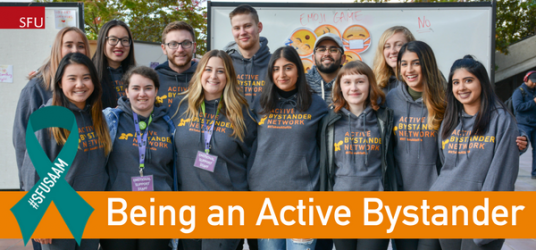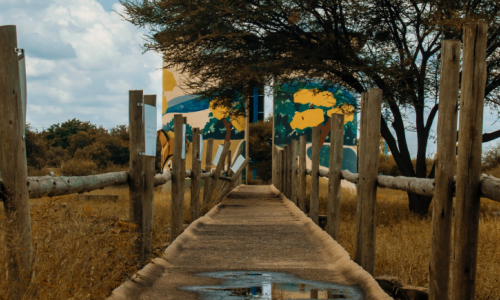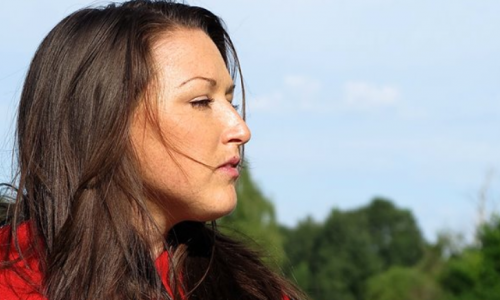
A few months ago, my mum and I were out late one evening walking our dog. We walked down a dimly lit, quiet street, and saw a shadow in the distance. We came across someone who I read as a young woman. She looked extremely nervous waiting for the bus, as she fidgeted with her phone, paced back and forth, and kept looking around at her surroundings. As my mum and I got closer, the woman’s discomfort became more apparent.
“Are you okay, sweetie?”, my mum asked. The young woman responded, saying that she was extremely nervous and afraid of waiting for the bus late at night. Her bus was really late, it was dark, and a strange man kept walking up and down the street, making her noticeably uncomfortable. My mum and I asked her if it was okay for us to wait with her until her bus came and she was so happy that we offered. We waited with her until her bus came and when it did, with tears welling up in her eyes and a huge smile beaming on her face, she nearly tackled both my mum and I with hugs.
As my mum and I watched the woman board her bus, we walked back home in silence.
Being a bystander is easy, but being an active bystander can often pose as a challenge. Many of us have been bystanders before, but not all of us can say that we actively intervened in harmful situations—and that’s okay. In the words of Will Smith from The Fresh Prince of Bel-Air, we’re programmed to ‘mind ya business’ and to let people deal with their own issues. Often, though, people may be hoping someone will intervene, if even in a small way.
An active bystander can significantly change the outcome of a harmful situation. For example, had my mum and I simply walked away from the young woman waiting for her bus, she may have felt more anxious or experienced harassment. While we know that most incidents of sexual violence are perpetrated by someone the person knows, many people often feel unsafe when they are isolated and in a dark place. Our active intervention made her feel more comfortable and helped her make her way home more at ease.
Being an active bystander has many components to it, and there are many ways we can incorporate it into our everyday lives. Here is my guide to being an Active Bystander at SFU!
Be Aware
I used to be someone who lived in her own bubble. Now, I’m mindful of harmful behaviours and comments. I pay attention to what people around me are saying and how they’re making others feel. It’s our responsibility to be aware of harmful comments or actions around us and it’s our duty to make sure everyone around us feels safer.
Use Your Voice
When I do recognize harmful behaviours or actions, I use my voice—I say something. This doesn’t always have to be in the form of a lecture or calling someone out. Sometimes it’s making a joke to turn the attention back on the individual causing harm. Other times, it’s vocalizing how a word or phrase was triggering, damaging, or harmful, such as using points of one’s identity as insults.
Offer your presence
Sometimes, simply standing by, drawing attention to, or, consensually placing your hand on their shoulder can help someone affected by a harmful behaviour in a big way. I often use my body language to indicate that I am available for support by simply just being there.
Follow Up
When someone I know has been impacted by a harmful situation, I always check up on them. Simply pulling them aside afterwards, sending them a text or calling them, or speaking to them later is adequate. I like to make sure that I show the impacted person that I care and that I’m available for support. Likewise, if you feel comfortable enough, you can also follow up with the person who caused harm to let them know their behaviour wasn’t cool.
Always Assess Your Own Safety
While being an active bystander is important, so is your personal safety - which looks different for everyone. I do not put myself in situations that will perpetuate more harm than good and neither should you! Remember, being an active bystander is not a superhero approach, and not only in terms of physical safety. Being an active bystander requires a lot of emotional labour, which is why it’s important to pick and choose your interventions wisely! #selfcare.
I also recognize that there are a multitude of reasons for why folks do not intervene. I’m the kind of person who raises her hand to share her opinion in a lecture of two hundred people. I’m comfortable speaking to strangers, I’m good at public speaking, and I make friends everywhere I go. However, not everyone is comfortable using their voice and there are many barriers to why folks may not want to intervene as active bystanders. For starters, the individual(s) causing harm may be friends and one might fear losing relationships with them. Others may feel that they are less powerful than those causing harm and think that their voice will go unheard. These are all very normal, valid feelings and it’s important to recognize that some individuals will have more power and privilege to be active bystanders than others.
When a rabbit in a forest hears a loud noise, it runs the other way. It does so because it knows that something is not right. As humans, we also have this feeling inside of us (we’re basically bunnies!). We all get a gut feeling when we know something is not right and it’s important for us to act on that feeling. We all have the capacity to intervene and we all have the ability to be active agents of change. We can all be active bystanders.

Beyond the Blog
-
Visit SFU's Sexual Violence Support and Prevention Office website to learn more about consent, locate on-campus support and services for Survivors, and keep up to date on upcoming SVSPO initiatives.















